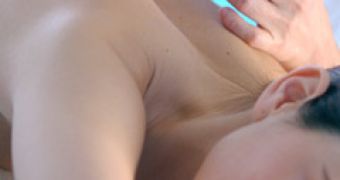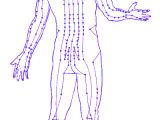If you want to avoid traditional medicine and the inherent mounds of drugs, this is an alternative. Acupuncture refers to a group of techniques, employing very thin, small needles introduced in some precise body parts for achieving a therapeutic answer. Its efficiency seems to be given by the fact that it causes the release of neurotransmitters, like endorphins, that ease pains and threat inflammations.
The Chinese have been using it successfully for 4,000 years. And the method is painless!
The needles are placed, in most cases, very far from the ill organ. For example, for treating a faint heart, the little finger is stung. For treating the stomach, the needles may be stuck on the leg. Usually, less than 5 needles per session are used. 3 needles give the organism a simple message, being more efficient than 20 needles.
The principles of the acupuncture are based on the Chinese concept of energy currents circulating through our bodies. The energy follows invisible paths called "meridians". The acupuncture points are grouped in these meridians. They make invisible energy whirls. By interfering with these points, the needles are considered to change the energy currents, regulating them.
Chinese people talk about the "vital flow", the "qi". This energy manifests in our body through heat, movement, thinking, emotions, and all that we do. The difference between a living person and a dying one is that the latter has been abandoned by its qi. For the Chinese, the disease is always an unbalance of the currents, of the energy flows inside the body. The needles are only meant to readjust these flows.
Thus, the acupuncture does not directly attack the disease. This technique is just supplementary; it is not aimed against severe maladies and its effects do not last long. It only has to accompany drugs and correct diet.
Some researches say that acupuncture could safely replace the anesthetic chemicals. 104 conditions are recognized to be treated by acupuncture, including post-surgery pains, allergies, rheumatism, sleep impairment, muscular pains, menstrual cramps, nausea, and vomits caused by chemotherapy or pregnancy. It was also found to speed up the curing of the bone fractures. The Chinese also see in acupuncture a method of improving the mood.
A 2008 research at the University of Maryland shows that acupuncture boosts the chances of in vitro fertilization by 65 %.
It rarely has secondary effects, but some patients say they experience pain, numbing, or tingles. The risk of infection is reduced by correct sterilization of the needles or by using only one-use needles.
Acupuncture is not restricted to humans: veterinarians apply it successfully on dogs and racehorses as well.

 14 DAY TRIAL //
14 DAY TRIAL // 
